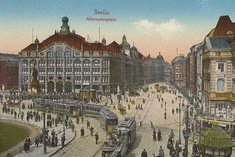Featured Quizzes
User Quizzes
Create Quiz
Data and Charts
Badges and Games
About JetPunk
JetPunk Shop
Dark Mode

Largest Cities In The German Empire 1871-1890
The German Empire experienced massive population increases and urbanisation in the 48 years it existed. Can you name the largest cities in The German Empire for the period 1871-1890?
The German names were used for consistency, the English names will work
Make sure to check out part 2 for the period 1900-1919
Some of these cities are no longer in Germany
Rate:
Last updated: September 3, 2020
You have not attempted this quiz yet.
More quiz info >>
| First submitted | September 2, 2020 |
| Times taken | 106 |
| Average score | 71.7% | Report this quiz | Report |
3:00
Enter answer here
0
/ 60 guessed
Time Used
00:00
Best Time
00:00
The quiz is paused. You have remaining.
Scoring
You scored / = %
This beats or equals
% of test takers
also scored 100%
The average score is
Your high score is
Your fastest time is
Keep scrolling down for answers and more stats ...
|
|
|
New and Popular
Save Your Progress
Copyright H Brothers Inc, 2008–2024
Contact Us | Go To Top | View Mobile Site

The urbanisation was focused in the Rhineland, Westphalia, Saxony, and Brandenburg and the largest industrial development was focused in the Ruhr, Saxony and Silesia. Generally this shift didn't affect the east, in the regions of East Prussia and Posen in 1910, 2/3 of the population lived in communities of less than 2,000, for the Rhineland and Westphalia the figure was 1/5.
In addition, the German cities of Duisburg, Essen, and Kiel all had their populations increase by five times or more during this time period.